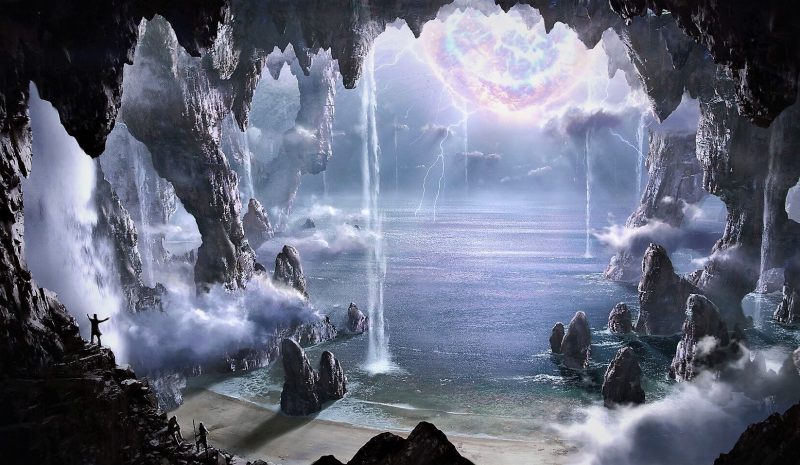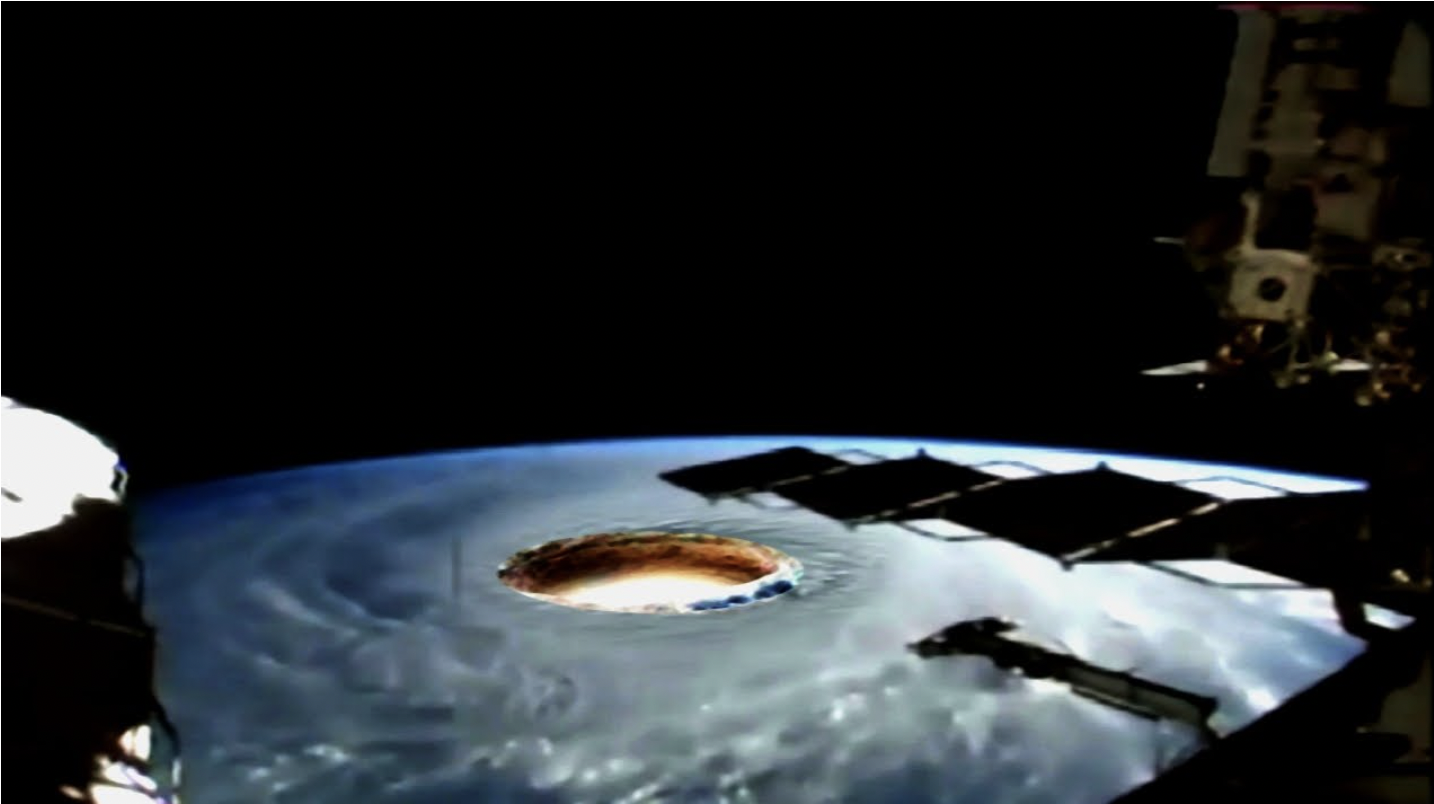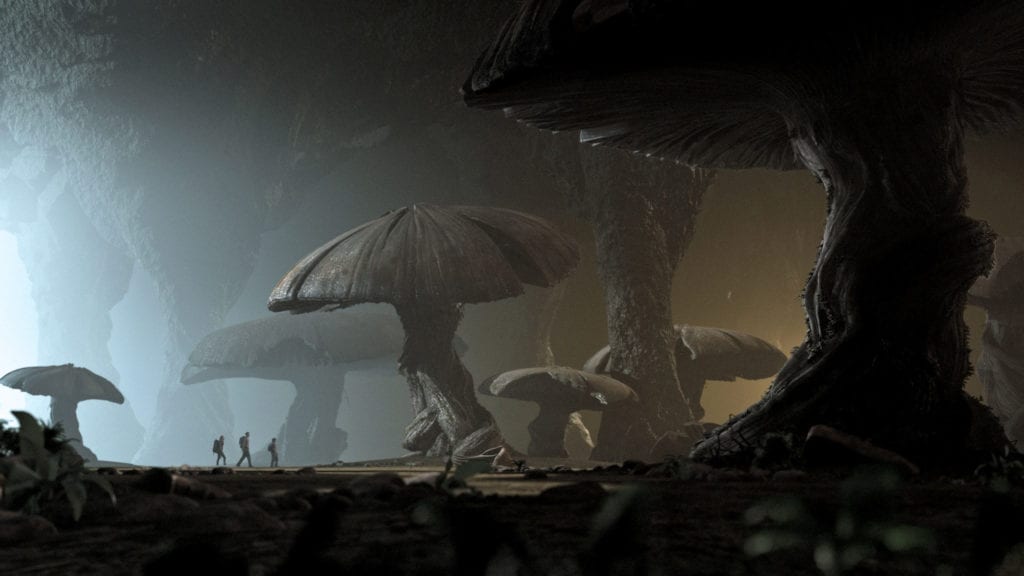
The interior of the Earth is a subject that has given much to talk about and has been extensively discussed by many theorists. Some have the notion that the interior of our planet is a hollow space and this continues to be the subject of study and controversy for the scientific community since the 18th century.

It all began in 1970, when the United States Environmental Science Service Administration (ESSA) published in the press some photographs taken by the ESSA-7 satellite corresponding to the North Pole.
One of the photographs appeared with the sky clear and revealing a huge hole where the Pole should have been. These photographs caused great controversy among people, who wondered what a perfectly round hole in the Arctic looked like.
It was then that the editor and ufologist of Flying Saucers magazine, Ray Palmer, found in the photograph published by NASA a substantial reason to carry out the theories of advanced underground civilizations.
On the other hand, there is the story of Admiral Richard E. Byrd. This polar explorer recorded in his personal diary the experience he had had while flying over one of the Poles in 1928. There, the pilot recounts, he witnessed the existence of wonderful valleys and the presence of prehistoric animals.
These experiences impacted the general public, which began to question whether the theory of the hollow Earth was true.
As a result of Byrd’s experience, Amadeo Giannini wrote several articles and books such as Worlds beyond the Poles, in which he theorized that Byrd had not flown over the Arctic, but had entered through one of the holes that lead to the center of the Earth by mistake.
It was then that Ray Palmer, based mainly on Giannini’s aforementioned book, published this theory in the December 1959 issue of his magazine, sending a voluminous correspondence on the matter.
According to Giannini and Palmer, during his supposed flight over the North Pole in 1947, Vice Admiral Byrd radioed that he saw below him that it was not snow, but areas of land with mountains, forests, vegetation, lakes and rivers and, among the undergrowth, a strange animal that looked like a mammoth.
Scientific Theories that Support the Hollow Earth Theories
On the other hand, we found great astronomers and mathematicians who supported the Hollow Earth theory. One of them was the prestigious doctor Edmund Halley, royal astronomer of England in the eighteenth century and discoverer of Halley’s comet.

He postulated that the Earth was hollow on the inside and that inside it housed three concentric cones with a molten center of lava, which served as an “inner sun”. Newton also believed in this theory.
Another scientist who championed the Hollow Earth theory was Leonhard Euler, an 18th century mathematical genius. He said that apart from being hollow, the Earth had two openings that corresponded to the Poles of the globe.
In addition to scientific theories about it, the idea that the Earth is hollow on the inside has sparked the imagination of many writers and artists.
One of the best-known works that talk about it is Journey to the Center of the Earth, Jules Verne (1864). Another well-known work is The Adventures of Arthur Gordon Pym, by Edgar Allan Poe (1833).
These and many more novels have kept alive the idea that the Earth is hollow, and that it also houses a civilization more advanced than ours, the inhabitants of the surface.
Currently, tests are still being carried out, this time with the help of the advanced technology that we own. In 1965, a project led by the USSR was launched, it was about making a 15-kilometer-deep well, which was called the Kola well.
It is said that the results they got from this project were not revealed to the public, and that they could have heard the noise of human and animal voices with the help of ultra-sensitive microphones.
Studies have also been carried out with low-frequency waves to find out what is in the Earth’s soil. In these studies it has been discovered that between 450 and 500 kilometers deep, there is a change in the surface, a kind of linearity that delimits with another strip of the Earth.
And after this phenomenon, the wave signal is completely lost, as if there was something abysmal from this distance.
Only small vague noises and silence are captured. This proof has not come openly to the public light, but has been kept in the secrecy of those who made these studies.
We also find contradictions at the hands of renowned scientists, since they have come to affirm that every 30 meters the temperature of the Earth increases one degree.
If so, its center (6,500 kilometers deep) would reach a temperature of 220,000 ºC, which would mean that the temperature inside the Earth would be much higher than that of the sun’s crust, which only reaches 6,000 ºC.
But is this theory reduced only to Earth? the answer is no. The defenders of this theory affirm that the other planets also consist of two polar holes and an inner sun.
Once again, NASA would have modified the images taken of the planets of the solar system to censor the holes they have at their Poles.
Then there are the northern lights, of which it has been speculated that they are the result of the inner sun housed in the center of the planet. One of the defenders -and promoters- of this theory was Marshall B. Gardner, who wrote the book Journey to the interior of the Earth.
Gardner held that there are polar lights on Mars, Venus and Mercury, which come from the rays of their central suns, passing through the respective polar openings. The polar lights that it radiates are those of the aurora borealis and are not due to magnetism, but to the central sun of the Earth.
Questions to ponder:
Why is it forbidden to fly over the poles? Why does Google Earth censor polar latitudes? Why are tropical seeds, plants, and trees found floating in the cool water inside icebergs?
Why do thousands of tropical birds and animals migrate north for the winter? Why is it hotter at the Poles than 1,500 km away from them? And why does NASA censor im





